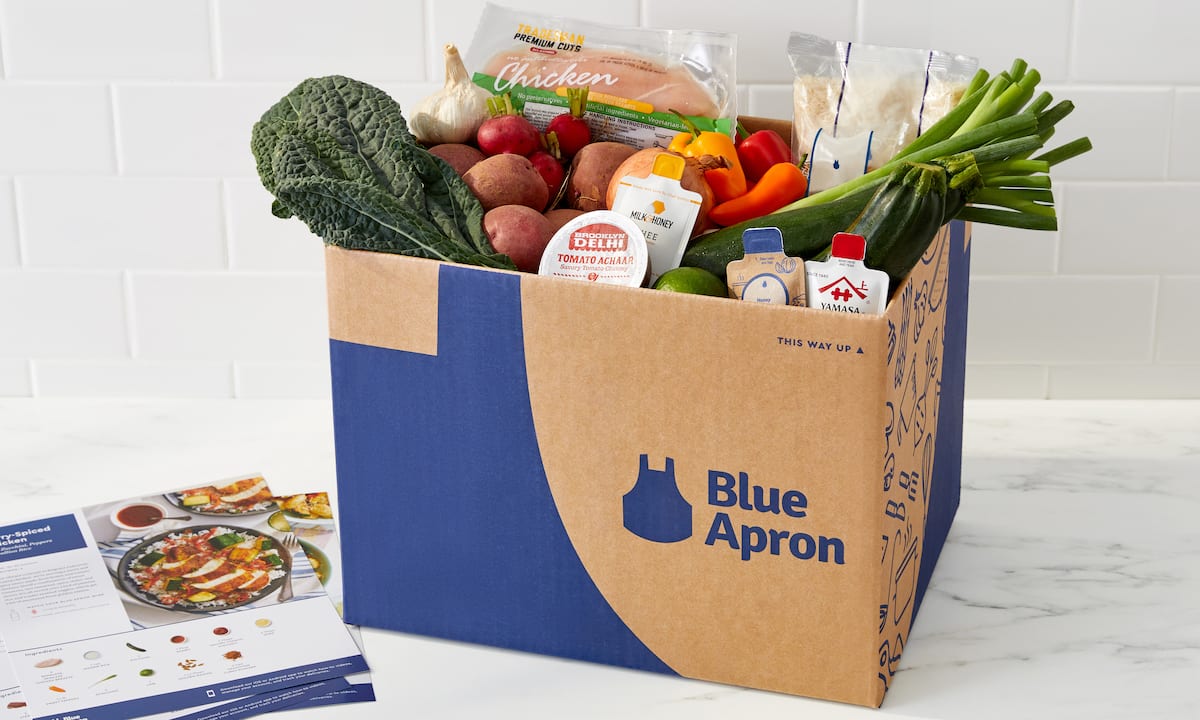Blue Apron CEO Says Customers Will Keep Cooking After COVID
 At the start of the pandemic, businesses that provide contact-free food solutions experienced a surge in demand, with companies ranging from eGrocers to third-party delivery services seeing orders come in at unprecedented rates.
At the start of the pandemic, businesses that provide contact-free food solutions experienced a surge in demand, with companies ranging from eGrocers to third-party delivery services seeing orders come in at unprecedented rates.
But now that restaurants are reopening and people are eager to get out and about again, many have wondered if all those touchless, time-saving conveniences consumers have embraced over the past 14 months are going to disappear or stick around and become part of the post-pandemic way of life. According to Blue Apron President and CEO Linda Kozlowski, the meal kit trend is here to stay.
“As a result of the pandemic, we saw that cooking habits increased in 2020, and both third-party and our internal research support that those habits are expected to continue to some extent into 2021,” Kozlowski told PYMNTS in an interview. “We believe meal kits are well-positioned to meet these interests,” she added, noting that Blue Apron appeals to customers on two key fronts — not only removing the burden of recipe planning, but also introducing consumers to new cooking techniques that help them sharpen their skills in the kitchen.
Innovating To Retain
As competing meal kit subscription service HelloFresh touts the growth of its customer base, Blue Apron is measuring its success first and foremost in terms of how each of those customers is using the service, turning its attention toward value per customer.
“First, we are focused on engaging and retaining our current customers by adding variety into our menu offerings and making sure we provide them the most value that we can,” said Kozlowski. Specifically, she pointed to product innovation as a key driver of customer value, noting that the company “introduced more new products than in any prior year” in 2020, which included adding Premium Recipes, creating wellness-centric options and integrating the ability to add more meals per week to a customer’s subscription. These additions, Kozlowski said, have “resulted in record levels of revenue per customer.”
This focus on providing value to existing customers is especially important for a meal kit subscription service, given that the category is notoriously susceptible to churn. In fact, a pre-pandemic study in 2018 estimated that 70 percent to 80 percent of subscribers to leading meal kit services unsubscribed within six months of signing up.
“Once we’ve established an engaged customer base, we then work to attract new ones through the right marketing tools,” said Kozlowski. “…By adding this level of value to each customer, we can then invest in acquisitions as we grow.”
Separating From The Pack
The meal kit subscription space is highly competitive, with consumers facing a potentially overwhelming number of options. In addition to Blue Apron and Hello Fresh, there are pre-cooked meal subscription services like Freshly, culturally specific meal kit providers like Quicklly and values-based subscription services like Ends+Stems.
“We believe we offer the best product on the market, and our culinary authority is what gives us an advantage over others,” Kozlowski said.
Food quality is far from the only way that Blue Apron looks to give its customers a uniquely positive experience. Being a direct-to-consumer (D2C) company, the website and in-app interfaces also play an essential role. Kozlowski explained, “We believe that our digital experience is key to our success. We make it easy for our customers to plan their weekly Blue Apron meals, see upcoming menu options and engage with our customer service team.”
Meeting Consumers Where They Are
Some speculated in the early months of the COVID-19 outbreak that the pandemic-fueled meal kit surge may not last for years to come. However, Kozlowski noted on a recent earnings call that the company is “seeing sustained levels of heightened customer value, even as more people are being vaccinated and travel levels increase.”
Speaking to this trend, Kozlowski told PYMNTS, “We believe there are a lot of opportunities for Blue Apron to complement our customers’ regular routines. We know that they enjoy Blue Apron a couple of nights a week, while also ordering takeout and going to restaurants.”
To that end, she said, the company is looking to bring more “flexibility and variety” to its offerings, allowing consumers to turn to Blue Apron products “as a part of different meal occasions.” For example, the company recently introduced an Add-ons feature, allowing customers to supplement their order with side dishes, appetizers and desserts.
Ultimately, Kozlowski believes that this degree of personalization will allow meal kit subscription services to fit more seamlessly into consumers’ lives in the years to come. She predicted, “As the industry continues to evolve, I believe that meal kits will become even more personalized, and we are setting ourselves up to address that anticipated continued evolution.”
